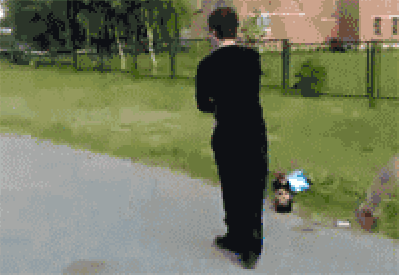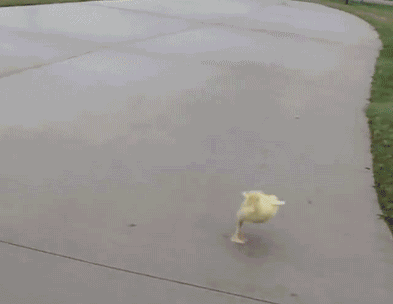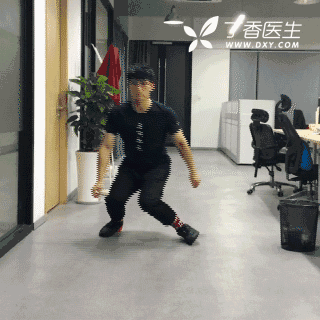Knees are very important to us. Usually, kneeling keyboard and kneeling washboard cannot be separated from them.
However, as the largest and most complicated joint of the human body, it not only silently bears the weight pressure of the human body, but also mobilizes various structures to participate in activities, which is easy to get injured.
When the knee joint is injured, its distress signal is just one word-
Pain!
And our most intuitive feeling is that after standing and walking for a long time, or just running for one step, our knees will become faint sour or even painful…
Does this mean there is something wrong with the knee?

Different pain methods
Representing different issues
Knee pain, is a grinding goblin, change the method to let you guess its mind. Where the pain, how the pain method, have knowledge:
In the meantime, it is necessary toPain after weight-bearing exercise is a signal of ligament edema.
If there is obvious tenderness under the anterior side of the knee, swelling and blunt changes will also be felt during touch examination.
This situation indicates that there may be ligament edema. Immediately applying ice to bones and joints can make ligament edema fade down quickly.
In the meantime, it is necessary toPain only in the morning is a sign of degenerative changes in the knee joint.
If you wake up in the morning, the knee joint will suffer from pain when it bends, but with the increase of activity, the pain will gradually disappear.
This kind of pain often occurs in the early stage of knee joint degenerative diseases.
Slight bending causes pain, which is a signal of patella/articular cartilage damage.
When going up and down stairs, climbing mountains and squatting on horses, if there is stabbing pain, soreness or soreness at a fixed position of the knee joint, it will not make you strong…
This indicates that you may have patella or articular cartilage injury.
Especially when going down the stairs, the pain will be more severe than when going up the stairs. In this case, patella damage is more likely.
In the meantime, it is necessary toFixed position pain is a signal of meniscus damage.
After knee joint sprain occurs during exercise (even a casual minor injury), if there is still pain at a fixed position inside or outside the knee joint, and the pain is more obvious when pressing.
This situation indicates that there may be meniscus injury.

Source: soogif.com
In the meantime, it is necessary toInability to bend is a signal that multiple structures are damaged.
No matter in the case of what, the knee joint suddenly appears [interlocking] symptoms-that is, during walking, squatting and other activities, the knee joint suddenly cannot move like stuck, accompanied by obvious pain.
This situation indicates that there may be free body or meniscus injury after cartilage injury.
If you are not sure just by looking at it, you may as well try the following action.
[Duck Step] Help You Judge
Is there a problem with your knee
Duck step, as its name implies, is the step of ducks.
There are pictures and the truth!

Source: soogif.com
Emmm … … There is really no wrong picture.
It’s just that it’s too difficult for duck elder brother to demonstrate. Let’s come to see my younger brother.
The main points of the movement are very simple. First, squat down slowly to the deepest level, and then walk forward with left and right legs alternately like ducklings.

Photo Source: Dr. Clove Team
If you feel acupuncture-like pain in front of your knee during squatting, or if you feel that your knee is very sour, it indicates that the patellar cartilage of your knee joint may be damaged.
If the knee is stuck and unable to move during walking, or if you feel obvious pain on the medial or lateral side of the knee, the meniscus may be damaged.
However, it should be noted that this method has certain requirements on thigh muscle strength and body coordination, and is not recommended for people over 50 years old.
In addition, the test should be well protected or accompanied by others.
After the test, if there is no discomfort, congratulations, your knee is still a good knee! Next, prevention is enough.
[Straight Leg Raise] Movement
Make your knees more durable.
According to statistics, up to 60% ~ 70% of men over 60 years old suffer from osteoarthritis, and the proportion of women is higher.
If you can’t complete the duck walk described earlier or receive a distress signal from your knee, don’t drag it, you should see a doctor immediately.
Otherwise, chronic injury is easy to occur, which will lead to worse results.
If your knee is fine, you can also make your knee stronger and more durable through exercise.
The exercise method is very simple, as long as you stick to a little trick-straight leg elevation.

Photo Source: Dr. Clove Team
Action essentials:
- Sit firmly and keep the knee joint outside the seat range; Then the whole leg is stretched straight and kept horizontal, and the toes are hooked at the same time. At this time, the thigh muscle tension can be obviously felt. Keep your legs up for 30 seconds, relax for 5 seconds, and then repeat.
The younger brother demonstrated with injuries and moved faster. When you do it yourself, you must last a little longer, keep your legs high and tighten your muscles for 30 seconds before putting them down.
Don’t underestimate this simple action, insisting on exercise can strengthen the strength of quadriceps femoris and make the knee joint more stable.
This kind of exercise can be done whether it is knee joint injury or recovery after surgery, or prevention of knee arthritis.
Of course, if it hurts when you move, don’t force yourself to see a doctor as soon as possible.
Finally, I would like to send you a word:
And do and treasure [knee], don’t wait for old to empty sigh [knee].

This article was assisted by the Institute of Spinal Diseases of Shanghai Longhua Hospital.
Li Researcher Sun Yueli Reviewed
-References-
[1] Michalik R, Rath B, Springorum HR, L ü ring C, Tingart M. [Anterior knee pain after total knee arthroplasty: Causes, diagnosis and treatment. Orthopade. 2016 May; 45 (5): 386-98. Doi: 10.1007/s00132-016-3256-7.
[2] Karrasch C, Gallo RA. The acutely induced knee. Med Clin North Am. 2014 Jul; 98 (4): 719-36, xi. Doi: 10.1016/j.mcna.2014. 03.002. Epub 2014 Apr 24.
Source of cover photo: www.hizy.net Genuine Photo Library
Editor: Karen
